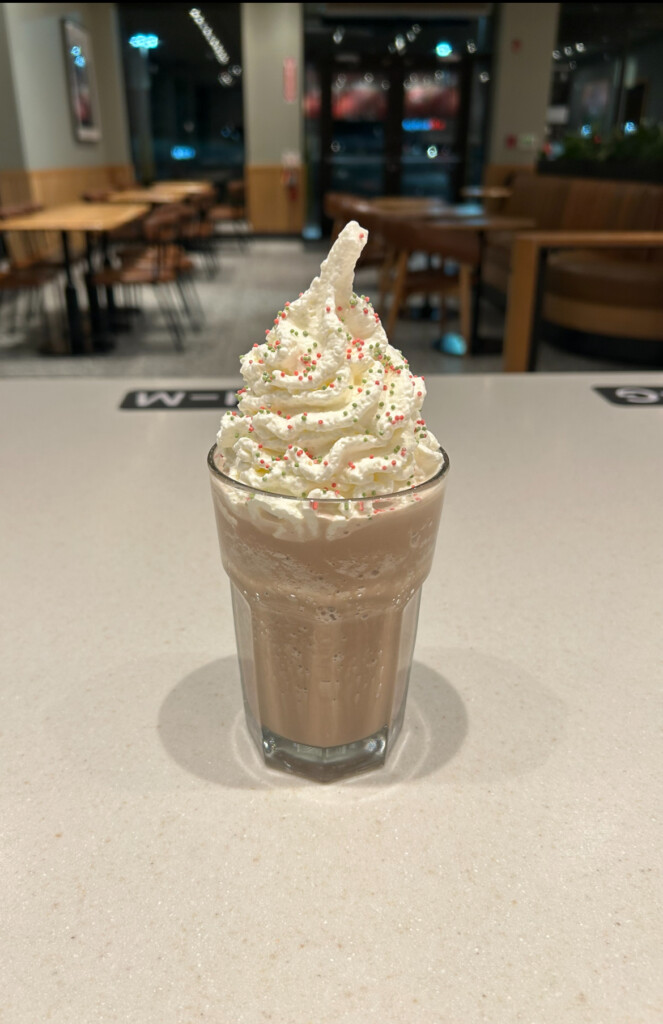Happy Holidays!
The familiar cry rings from the rooftops as people across the U.S. — and the globe — prepare for the end of the year and the multitude of celebrations it encompasses. Stores, restaurants, and even Wilson Commons have been blasting renditions of beloved Christmas songs through their speakers since Turkey Day. But as the Christmas celebrations expand, they are creeping further away from the original spirit of the season.
Winter is a special time of year for many people. It is a time for travel, merriment, and family reunions; a time for home-baked goods, Friendsgivings, and political debates over the cramped dinner table. And, of course, it is a time for gift-giving.
This holiday season, Americans are spending more than ever. With consumers getting a jump on their gift lists, Adobe reported 131.5 billion dollars spent this year from Nov. 1-Dec. 2, beating out pre-COVID numbers.
Where is this money going? The same report forecasts consumers will spend a record $241 billion online during the 2024 holidays, up 8.4% from 2023. According to the National Retail Federation (NRF), “Online return rates decreased from 20.8% in 2021 to 16.5% in 2022.” In 2023, things began to pick back up again as Capital One Shopping Research saw online sales returns increase 7.22% from 2022 to 2023 while in-store returns decreased 19.3%.
Sales are increasing, and Christmases are becoming all the more lavish. This trend is expected to continue, with a separate NRF study finding that for the 2024 winter holidays, retailers expect the return rate to be 17% higher, on average, than their annual return rate.
With all the focus on buying gifts, commercialization has taken the holiday spirit out of the holidays, and in order to bring it back, we are recommending going back to the basics of mindful giving. Let us take you through a couple of non-Christmas December holidays that celebrate without breaking the bank, and bring just as much warmth to the soul as a nice mug of eggnog.
Indo-European Nordic and Germanic peoples gave small fruits and trinkets to children to celebrate the natural cycle of the Earth as part of ancient Yule traditions. During Hanukkah, children traditionally receive gelt (money) to symbolize dedication to education and freedom. When celebrating Kwanzaa, it is tradition for community members to give children gifts of books and heritage symbols to solidify their African or African American identity and instill values, such as the love of learning.
But at Christmas, instead of giving small, personal gifts, meant to teach kindness and strengthen identity, we are urged to buy the boldest, brightest, most expensive gifts for family and friends.
This holiday season, let’s go back to the basics of gift-giving. Instead of spending all your money on Christmas, people should look to other cultures to learn the truth of the cliche that holidays are about more than just gifts.
On Dec. 8, Catholics observe the Feast of the Immaculate Conception, a day that encourages contemplation of ways to extend compassion to those in need. In the spirit of this feast, consider engaging in community service and donations.
On the same day, many Buddhists around the world celebrate Bodhi Day, which is commonly recognized as a time for introspection and gratitude.
A few days later on Dec. 12, music, processions, and prayer honor Our Lady of Guadalupe, celebrated with parades, traditional dances, and songs of devotion often entertain pilgrims who have travelled long distances to visit the Basilica of Our Lady Guadalupe, the most visited Catholic shrine in the world.
These holidays emphasize celebrating with friends and family, focusing on personal growth, and engaging in community service, not who can buy the most expensive gift. This year, companies profiting off of Christmas could stand to learn a thing or two from their example, and find the true spirit of the holidays.


